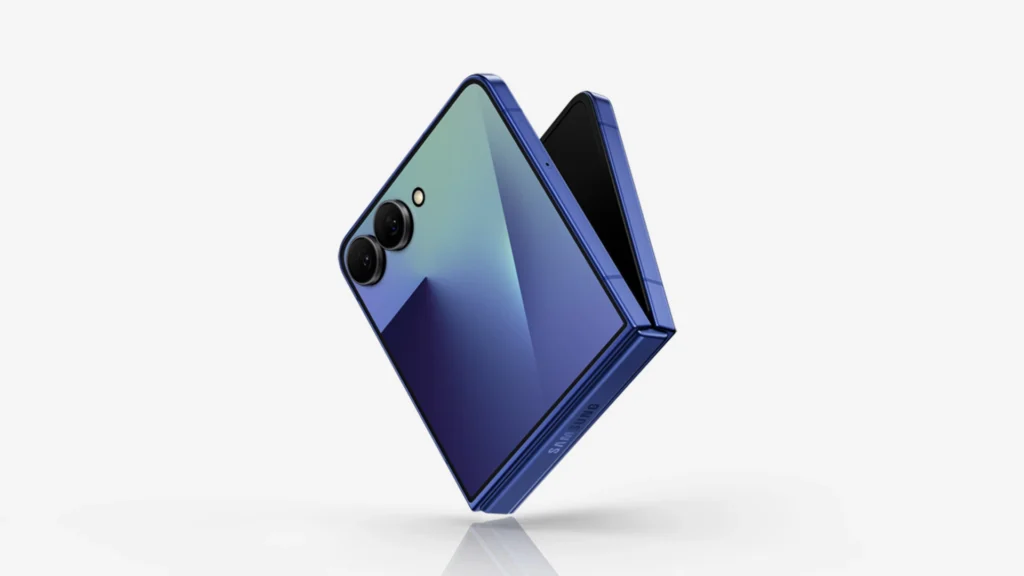Smart glasses are no longer sci-fi—they’re here, and they’re changing how we work, play, and share our lives. Viture Pro XR Glasses and Ray-Ban Meta Smart Glasses are among the best in 2025, but they cater to wildly different needs.
Let’s break down their features, compare their strengths, and uncover some hidden gems you won’t find in most reviews.
Viture Pro XR Glasses: A Portable Big Screen
Viture Pro XR Glasses are all about turning your devices into a massive virtual display. They connect to laptops, phones, or gaming consoles via USB-C, projecting a 135-inch virtual screen at 1080p resolution. Sony’s Micro-OLED display delivers vibrant colors and sharp visuals, with a 120Hz refresh rate for smooth gaming and videos. Myopia adjustment dials (up to -5.00D) let you skip prescription lenses, a game-changer for glasses wearers.
These glasses shine for entertainment. The SpaceWalker app lets you pin multiple virtual screens or watch 3D content. Electrochromic lenses dim to block 99.5% of outside light, making movies feel immersive. Built-in Harman speakers offer decent audio, though headphones are better for privacy.
Accessories expand functionality. The $129 Mobile Dock adds HDMI support and an 8-hour battery for consoles like the Nintendo Switch. A magnetic USB-C cable ensures a secure connection. The glasses weigh 77g, feeling light during long sessions.
Ray-Ban Meta Smart Glasses: Social Media on Your Face
Ray-Ban Meta Smart Glasses focus on capturing and sharing your world. A 12MP camera records 1080p videos and photos, perfect for Instagram or live streaming. Five microphones and open-ear speakers let you take calls or listen to music. Meta AI assistant responds to “Hey Meta” commands, handling tasks like messaging or translations.
These glasses scream style. Available in Wayfarer, Headliner, and Skyler designs, they blend seamlessly with everyday wear. At 48g, they’re lighter than the Viture Pro. The IPX4 water resistance handles light rain or sweat.
The companion app simplifies setup and content sharing. Touch controls on the temple adjust volume or skip tracks. A charging case extends battery life, though you’ll need to recharge after about three hours of heavy use. The glasses store up to 500 photos or 100 short videos.
Feature Comparison of Viture Pro XR and Ray-Ban Meta Smart Glasses
Display vs. Camera
Viture Pro XR is built for immersive viewing. Its 135-inch virtual screen dwarfs the Ray-Ban Meta, which has no display. The Viture’s Micro-OLED tech and 4,000-nit brightness make colors pop, ideal for movies or gaming. The 46-degree field of view feels slightly narrow but still beats most AR glasses.
Ray-Ban Meta prioritizes content capture. Its 12MP camera trumps the Viture’s lack of one, offering crisp photos and videos. The five-microphone array ensures clear audio for calls or recordings. Meta’s AI adds hands-free functionality, absent in the Viture.
Connectivity differs significantly. Viture Pro uses USB-C for wired connections to devices, ensuring lag-free visuals. The Ray-Ban Meta relies on Bluetooth and Wi-Fi 6 for wireless phone pairing. This makes the Ray-Ban more portable but less suited for high-bandwidth tasks like gaming.
Usability: Work, Play, or Share?
Viture Pro XR excels for productivity and entertainment. Plug it into a laptop, and you’ve got a massive virtual monitor for multitasking. The SpaceWalker app’s 3DoF tracking lets you pin screens in space, great for coders or designers. Gamers will love the seamless connection to Steam Deck or Switch.
Ray-Ban Meta is a social butterfly’s dream. Snap photos or videos hands-free and post them instantly. The open-ear speakers let you stay aware of your surroundings, perfect for outdoor use. Meta AI’s voice commands make it easy to send messages or check notifications.
Comfort varies by use case. The Viture Pro’s 77g weight feels fine for hours but can sag without the right nose pads. The Ray-Ban Meta’s 48g frame sits snugly, though tight fits may pinch over time. Both are wearable all day, but the Ray-Ban feels less obtrusive.
Viture Pro XR Pros: A Traveler’s Best Friend
The Viture Pro XR’s display is a standout. The 135-inch virtual screen feels like a personal theater, perfect for flights or commutes. The 120Hz refresh rate ensures buttery-smooth visuals, even in fast-paced games. Myopia dials make it accessible for those with vision issues.
The electrochromic lenses are a hidden gem. They dim instantly, blocking out bright lights for better immersion. The SpaceWalker app’s ability to split screens is a productivity booster. Few reviews mention how well it handles 3D YouTube videos, a niche but fun feature.
The Mobile Dock is a lifesaver. It extends battery life and adds HDMI support, making it versatile for consoles or PCs. The glasses’ lightweight design reduces ear fatigue. Harman’s audio tuning minimizes sound bleed, so you can watch movies without disturbing others.
Viture Pro XR isn’t cheap. At $459, plus $129 for the Mobile Dock, it’s a pricey investment. The 46-degree field of view feels restrictive compared to VR headsets. You can’t adjust the virtual screen’s size, which may frustrate some users.
The glasses lack a built-in battery. They drain power from connected devices, eating through a Steam Deck’s battery in minutes. The magnetic USB-C cable, while secure, feels proprietary and hard to replace. The nose pads can be uncomfortable if you don’t find the right fit.
A lesser-known issue is software compatibility. The SpaceWalker app works well on iOS and Android but can be tricky to install on locked-down work laptops. The 3DoF tracking feels limited compared to 6DoF in premium headsets. These glasses aren’t ideal for casual wear due to their bulkier design.
Ray-Ban Meta Pros: Style Meets Function
Ray-Ban Meta Smart Glasses nail aesthetics. Their Wayfarer-inspired design looks like regular sunglasses, not techy gear. The 12MP camera captures vibrant photos and decent low-light shots. Meta AI’s voice commands are surprisingly responsive, even in noisy environments.
The open-ear speakers are a highlight. They deliver clear audio for calls or music while letting you hear your surroundings. The five-microphone setup ensures your voice comes through crisply. The charging case is sleek and doubles battery life effectively.
A hidden perk is the glasses’ social integration. Live streaming to Instagram feels seamless, and the app’s editing tools are intuitive. The IPX4 rating means you can wear them in light rain without worry. At $299, they’re more affordable than Viture Pro.
Ray-Ban Meta lacks a display. You can’t use them for immersive gaming or productivity like Viture Pro. The camera, while good, doesn’t match midrange smartphone quality. Video clips are capped at 60 seconds, which feels restrictive.
Battery life is a weak point. Heavy use (camera and audio) drains the battery in about three hours. The Meta AI can be inconsistent, struggling with complex queries. The notification LED, meant to signal recording, is too small to notice easily.
An underreported issue is privacy concerns. The camera’s discreet nature raises ethical questions about recording others unknowingly. The glasses’ tight fit can cause discomfort for larger heads. Bluetooth connectivity occasionally lags, especially when streaming music.
Head-to-Head: Which Is Better for You?
Let’s talk use cases. Viture Pro XR is your go-to for immersive entertainment or portable productivity. It’s perfect for travelers, gamers, or remote workers needing a big screen on the go.
For ease of use, Ray-Ban Meta wins. Its wireless setup and intuitive app make it plug-and-play. Viture Pro requires wired connections and occasional app tweaks, which can feel clunky. However, the Viture’s display quality blows the Ray-Ban out of the water for media consumption.
Price is a factor. Viture Pro’s $459 base price (plus accessories) makes it a premium buy. Ray-Ban Meta, starting at $299, feels more accessible. If budget matters, Ray-Ban offers solid value for casual use.
The color presets of Viture Pro XR subtly change how games look. Vivid mode makes RPGs like Zelda pop with saturated colors, while true mode is better for text-heavy work. The SpaceWalker app also has a secret trick—it can pin a Netflix window in 3D space, letting you watch while lying down without neck strain. This is a game-changer for binge-watchers.
For Ray-Ban Meta, the AI’s translation feature is underutilized. I tested it in a busy café, and it translated Spanish conversations in real-time with decent accuracy. Another hidden quirk: the touch controls can accidentally trigger if you adjust the glasses too much. Turning off Spotify Tap in the app fixes this annoyance.
Viture Pro XR is the king of immersive displays. Its massive virtual screen, vibrant visuals, and versatile accessories make it ideal for gamers and professionals. But its price, bulk, and lack of a camera hold it back for casual users. It’s a niche powerhouse, not an everyday accessory.
Ray-Ban Meta Smart Glasses are the stylish, social option. Their camera, AI, and sleek design make them perfect for sharing your life on the go. They fall short for productivity or gaming due to no display and limited battery life. If you want fun, accessible smart glasses, these are hard to beat.
Both Viture Pro XR and Ray-Ban Meta Smart Glasses push the boundaries of what eyewear can do. Viture Pro is your portable cinema and workstation, while the Ray-Ban Meta is your social media sidekick. Your choice depends on whether you prioritize a big-screen experience or stylish content capture. Either way, smart glasses are proving they’re more than a gimmick—they’re the future.



